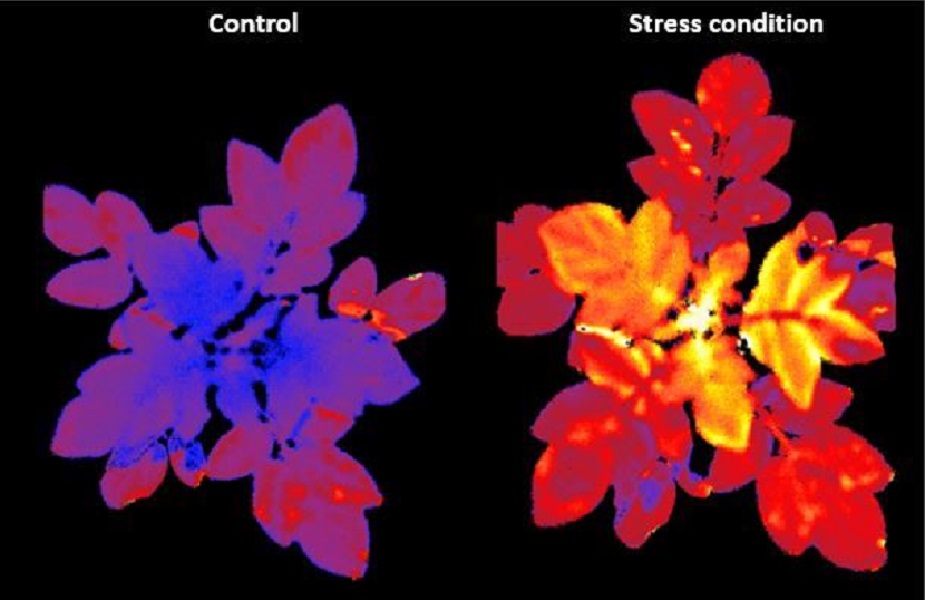
GE Potato Plant Responds to Stress by Glowing
June 2, 2021| |
A group of scientists developed a potato that emits light at the earliest stages of stress. The breakthrough can help give warning and provide enough time for farmers to address the crop's problems before it is lost to abiotic stress.
The scientists chose to modify the Irish potato (Solanum tuberosum) by establishing a whole-plant redox imaging that makes the potato express the chloroplast-targeted redox-sensitive green fluorescence protein 2 (roGFP2). The gene expresses a fluorescent protein as a response to the presence of reactive oxygen chemical molecules that the plants produce to manage stress. Therefore, the more stress that the potato experiences, the more reactive oxygen species it produces causing it to make more of the fluorescent protein. When put under a highly sensitive fluorescent camera, the stress-induced engineered potato gives a bright, fluorescent glow. According to the scientists, they were also able to document that the accumulation of the reactive oxygen species occurred in the early phase of the plant's response to stressful conditions like drought, extreme temperature, and high light.
Based on the findings, the team concluded that the whole-plant redox imaging can help researchers understand the crop's stress responses, which in turn can be applied to agricultural research specifically in improving phenotyping in breeding programs and early detection of field stress responses.
Learn more in Plant Physiology and New Atlas.
| |
You might also like:
- Study Shows Plants Respond to Different Light Intensities
- Research Identifies Best Gene to Provide Potatoes Resistance Against Late Blight
- Researchers Find Way to Protect Plants from Fungal Infection
Biotech Updates is a weekly newsletter of ISAAA, a not-for-profit organization. It is distributed for free to over 22,000 subscribers worldwide to inform them about the key developments in biosciences, especially in biotechnology. Your support will help us in our mission to feed the world with knowledge. You can help by donating as little as $10.
-
See more articles:
-
News from Around the World
- International Research Team Identifies Pathway for Accelerated Plant Flowering in Low-Nitrogen Soils
- ISAAA Webinar: What is Gene Drive?
- Over 2,000 Nigerian Farmers Reaping the Benefits of Biotechnology
- Canada Approves HB4 Drought Tolerant Soybeans
- Study Finds Key Protein in Plant's Response to Nitrogen Deficiency
- GM Maize Adoption Increases by 31% Every Year in the Philippines, Benefiting More Resource-poor Farmers
- Scientists Call for International Investment to Tackle Major Wheat Losses
- Scientists Provides New Tool in Breeding More Climate-Resilient Cole Crops
-
Research Highlights
- Researchers from China, Czech Republic, and USA Report Reference Genome for Maize B Chromosome
- GE Potato Plant Responds to Stress by Glowing
-
Plant
- Orange Poinsettias Developed Using CRISPR-Cas9
- International Trade in Crops with New Breeding Technologies: The Australian Perspective
-
Read the latest: - Biotech Updates (December 10, 2025)
- Gene Editing Supplement (November 26, 2025)
- Gene Drive Supplement (February 22, 2023)
-
Subscribe to BU: - Share
- Tweet

